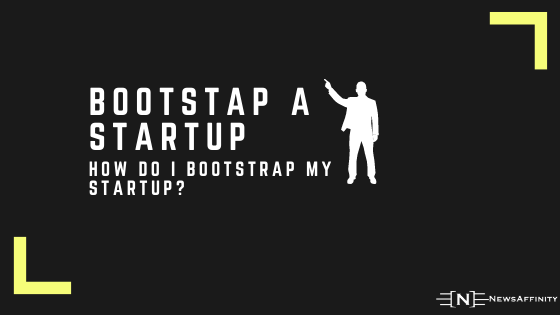As the old saying goes, if you need a helping hand, you’ll find it at the end of your arm. With that adage in mind, let’s begin with bootstrapping.
Bootstrapping comes from the concept of “pulling yourself up by your own bootstraps,” a comical image that computer scientists adopted to describe how a computer starts from a powered-down state. In the case of an entrepreneur, bootstrapping is synonymous with sweat equity — your own work and money that you put into your business without outside help.
Bootstrapping is often the only way to begin a business as an entrepreneur. By bootstrapping you will find out very quickly how invested you are, personally, in your idea.
Bootstrapping requires you to spend money or resources on yourself. This means you either spend your own cash to build an early version of your product or you build the product yourself, using your own skills and experience. In the case of service businesses – IT shops, design houses, etc. – it requires you to quit your day job and invest, full-time, in your own business.
Bootstrapping should be a finite action. For example, you should plan to bootstrap for a year or less and plan to spend a certain amount of money bootstrapping. If you blow past your time or money budget with little to show for your efforts, you should probably scrap the idea.
Some ideas take very little cash to bootstrap. These businesses require sweat equity, your own work on a project that leads to at least a “minimum viable product” or MVP.
Consider an entrepreneur who wants to build a new app-based business in which users pay (or will pay) for access to a service. Very basic iOS and Android applications cost about $25,000 to build and they can take up to six months to design and implement. You could also create a simpler, web-based version of the application as a bootstrapping effort, which often takes far less cash – about $5,000 at $50 an hour.
You can also teach yourself to code and build your MVP yourself. This is often how tech businesses begin and says plenty about the need for founders to code or at least be proficient in the technical aspects of their business.
You can’t bootstrap forever. One entrepreneur we encountered was building a dating app. She had dedicated her life to this dating app, spending all of her money, quitting her job to continue to build it. She slept on couches and told everyone she knew about the app, networking to within an inch of her life. Years later it is a dead app in an app store containing millions of dead apps. While this behavior might get results one in a thousand times, few entrepreneurs can survive for a year of app-induced penury, let alone multiple years.
Another entrepreneur we knew was focused on nanotubes. He spent years rushing here and there, wasting cash on flights, and taking meetings with people who wanted to sell him services. Many smart investors told him that he should go and work internally at a nanotube business and then branch out when he was ready. Instead, he attacked all angles for years, eventually leading to exhaustion. He’s still at it, however, which is a testament to his intensity.
Both of these entrepreneurs should have been ready to cut and run after two years of backward momentum. Ideas, even ideas that exist in reality, are worthless unless they bring in money. They bootstrapped for far too long.
We’ve seen all types of founders and we’ve bootstrapped plenty of failed ideas. Trust us: don’t waste valuable time chasing a dead product.
Before you bootstrap, write down your goal in year one and year two. Say you want to make enough to hire a single programmer in year one to help build the app. Then your business must make at least $100,000. Then, in two years, assume you will be working full time on the app. Expect the app to be making $300,000 or so, depending on your current salary. Anything under these targets is reason to quit.
Again, these numbers are potentially alarming but also realistic. Realism is the antidote to many of the poisons of passionate entrepreneurship — namely self-delusion.
Bootstrapping is not a suicide pact. By setting a time limit and budget for your bootstrapping effort you can prevent burnout, starvation, and failure. And you will fail if you don’t set limits.
Bootstrapping is far harder with brick and mortar businesses, but at least with those you can see, feel, and even visit your vision. In the documentary 42 Grams the restaurateur Jake Bickelhaupt spent years running a small dinner club out of his living room before opening a well-known and much-lauded restaurant of his own. He started small – he dedicated every inch of his apartment to the dinner club – and grew from there. Start small and grow big is the bootstrapper’s credo.
Bickelhaupt later closed his restaurant. Sometimes even passion can’t sustain you against the outrages of fate.
Until next time, happy coding.
Credit: VisibleMagic

















Comments